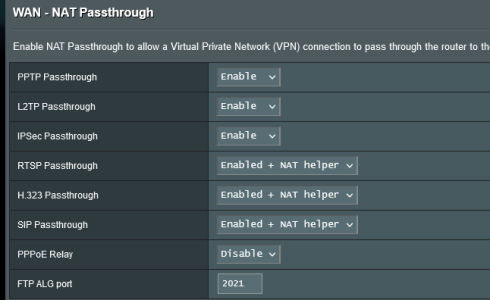I’m looking at upgrading from my current router to a AX86U Pro or GT-AX6000.
Was hoping for some assistance.
I want to set it up as Wireguard Server. It will be running behind double nat… port forwarding is already setup and works fine currently with my current router running wireguard. I am able to chuck in DDNS details that my Linux box updates with Cloudflare. Whenever I setup clients it will put the DDNS as the IP address even though I don’t have DDNS setup.
Hopefully that makes sense. Essentially can I put in DDNS details that will come across when I setup a wireguard client even though I don’t want the router to update the Public IP address…
Was hoping for some assistance.
I want to set it up as Wireguard Server. It will be running behind double nat… port forwarding is already setup and works fine currently with my current router running wireguard. I am able to chuck in DDNS details that my Linux box updates with Cloudflare. Whenever I setup clients it will put the DDNS as the IP address even though I don’t have DDNS setup.
Hopefully that makes sense. Essentially can I put in DDNS details that will come across when I setup a wireguard client even though I don’t want the router to update the Public IP address…


